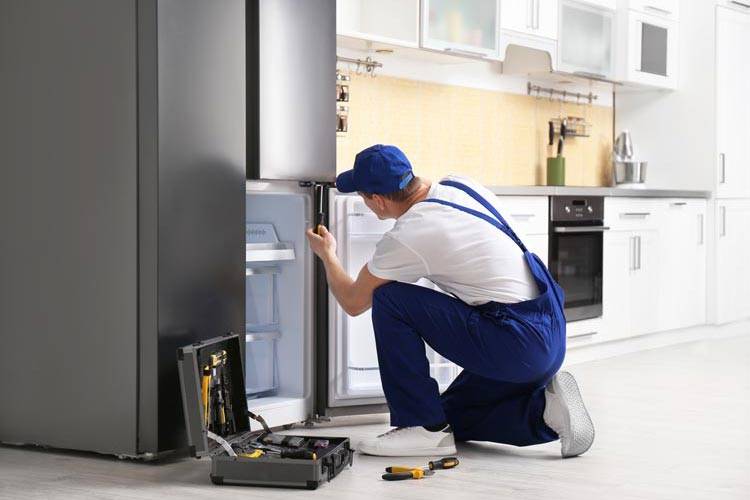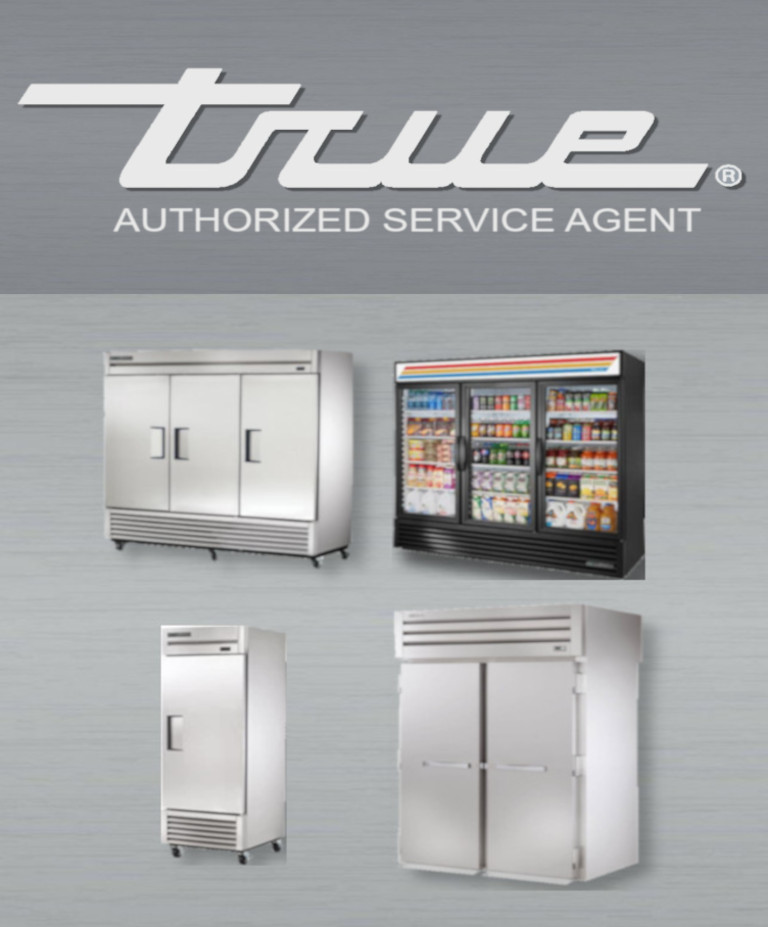Monthly Checklist for Smart Homeowners Powered by Best Sub-Zero Service Near You Dependable Refrigeration & Appliance Repair Service
Monthly Checklist for Smart Homeowners Powered by Best Sub-Zero Service Near You Dependable Refrigeration & Appliance Repair Service
Blog Article
The Ultimate Guide to Do It Yourself Device Repair Techniques
From fridges to dishwashing machines, comprehending just how to repair and fix these devices can save you time and money. Are you ready to discover necessary strategies that will encourage you to take care of repairs confidently?
Understanding Common Appliance Problems
When you depend on your home appliances, it can be annoying when they unexpectedly quit working or act up. Comprehending common appliance problems can help you troubleshoot issues effectively. For circumstances, if your fridge isn't cooling down, inspect the temperature settings or inspect the door seal for gaps. A malfunctioning cleaning equipment may be because of a blocked drain filter or a broken belt.
If your stove isn't heating, damaged elements or thermostat issues might be responsible. Dishwashing machines often experience problems with water drainage, so see to it the filter is clean and the drain hose pipe isn't kinked.
Additionally, listen for uncommon sounds; they commonly show mechanical concerns. By identifying these indicators, you can conserve time and potentially avoid costly repair work. A little understanding goes a long way in keeping your appliances, so stay informed to keep whatever running smoothly.
Vital Tools for Do It Yourself Repair Works
Prior to diving right into do it yourself appliance repair work, it is very important to collect the right tools to ensure the process goes smoothly. Beginning with a good set of screwdrivers, consisting of both flathead and Phillips, as they're vital for opening most devices. You'll also want a set of pliers for gripping and twisting cables or tiny components.
Don't fail to remember a multimeter; it aids you test electrical elements and detect concerns efficiently. A socket collection is helpful for loosening up or tightening up bolts, while an utility knife can be useful for cutting wires or opening product packaging.
Finally, consider having a flashlight handy to brighten dark rooms inside your appliances. With these essential tools, you'll be fully equipped to take on numerous fixings, saving both money and time. Gather your gear and get ready to roll up your sleeves!
Safety First: Safety Measures to Take
Before you start any type of home appliance repair service, it's important to prioritize safety and security. Make particular you put on individual safety devices, detach the power source, and keep your workspace arranged. These straightforward preventative measures can aid stop mishaps and ensure a smoother repair work process.

Individual Protective Devices
Safety and security equipment is an important part of any kind of DIY appliance repair service task. You need to always wear security goggles to shield your eyes from dirt and debris. A durable set of handwear covers will certainly shield your hands from dangerous materials and sharp edges. Think about utilizing a mask if you're taking care of chemicals or dust, ensuring you breathe safely while working. Steel-toed boots are also a smart selection, specifically when raising hefty home appliances. Do not fail to remember to use long sleeves and pants to protect your skin from potential injuries. By focusing on individual safety devices, you'll considerably minimize the risk of injuries and mishaps. Bear in mind, being prepared with the ideal gear maintains you safe and concentrated on finishing your repair service successfully.
Power Source Disconnection
To guarantee a safe DIY device repair work, detaching the source of power is important. Before you begin any kind of work, you must turn or unplug the home appliance off the circuit breaker. This straightforward step avoids electrical shocks and assurances that you can concentrate on the repair without fretting about accidental activation. Constantly ascertain that the home appliance is off by testing it with a voltage tester. If you're handling larger devices, like a washing machine or clothes dryer, ensure to protect the power cord and avoid any type of contact with water. Keep in mind, security first! When you're confident that the power is disconnected, you can with confidence wage your repairs, knowing you've taken the required precautions to shield yourself.
Workplace Organization
An efficient work location can make all the difference in your Do it yourself home appliance repair job. Start by removing your workspace of mess to prevent crashes and interruptions. A clean space not just boosts performance this contact form but likewise maintains you risk-free while you function on your appliance repair service.
Step-by-Step Guide for Refrigerator Services
When your fridge begins acting up, it can be frustrating, but tackling the issue yourself can save you time and money. Inspect for typical problems like temperature level variations or unusual noises. For a noisy fridge, check the fan and confirm it's not obstructed.
If there's water pooling inside, inspect the door seals for damages or dirt, and clean them if necessary. As soon as you have actually dealt with the issue, connect the fridge back in and monitor it for a couple of hours.
Taking Care Of Washing Machine Concerns
Much like refrigerators, cleaning machines can provide their very own set of difficulties, but numerous concerns can be fixed with a little troubleshooting. First, if your device will not begin, check the power cord and validate it's plugged in. Next off, examine the door latch; a damaged lock can avoid the cycle from starting. If you notice unusual sounds throughout operation, it may be as a result of international objects stuck in the drum or the drain pump.
If your clothes aren't getting clean, consider the water level and detergent type; using too much detergent can create excess suds, affecting performance. For leakages, examine the hoses for cracks or loosened links. Tightening up these can commonly solve the issue. Normal upkeep, like cleansing the filter, can protect against several concerns from emerging. Bear in mind, a little troubleshooting goes a lengthy method in keeping your washing machine running efficiently.
Troubleshooting Ranges and ovens
Just how can you fix typical issues with your stove or oven? Begin by checking the power supply. Ensure it's plugged in and the circuit breaker is not stumbled. If it's a gas oven, verify the gas shutoff is open. Next, test the burners: if they do not fire up, cleanse the igniter and look for clogs in the heater ports.
If your oven isn't heating, inspect the temperature level settings and verify the door seals tightly. If it's harmed., a defective home heating element might additionally be the offender; you could need to change it.
For irregular cooking, turn your frying pans and think about making use of an oven thermometer to validate top article accurate temperatures. Ultimately, if you hear unusual sounds or smell gas, switch off the device instantly and get in touch with a professional. By complying with these actions, you can recognize and deal with numerous usual stove and stove issues effectively.
Fixing Dishwashers Made Easy
When your dishwashing machine begins breaking down, it can be frustrating, but addressing common problems isn't as difficult as it appears. You'll learn step-by-step troubleshooting approaches that will certainly assist you identify the issue, together with the essential tools you'll require to tackle repair services yourself. Allow's make repairing your dishwasher a breeze!
Usual Dish Washer Concerns
While dishwashers are created to make your life easier, they can often run right into common problems that leave you really feeling discouraged. If your dishwasher's door will not lock, it can be an easy problem with the lock device or door seal. Dealing with these problems early can conserve you time and hassle down the road.

Detailed Troubleshooting
Before diving read into repair work, it's crucial to recognize the particular problem your dishwasher is encountering. If your dishwashing machine will not start, check the power supply and door latch. By carefully addressing each prospective concern, you can determine the issue and take the required actions to repair it, making your dishwasher function like brand-new once again.
Crucial Repair Tools
Having the right devices at your disposal can make all the difference when repairing your dish washer. Do not forget a bucket or towels for any kind of water spills during fixings.
If you're taking on blockages, a drain serpent or a wet/dry vacuum will be very useful. You could likewise desire a degree to guarantee your dish washer's appropriately lined up. Safety and security gear like goggles and handwear covers will shield you while you function. With these essential tools, you'll be fully equipped to tackle any type of dish washer repair work obstacle that comes your means.
Regularly Asked Questions
If an Appliance Is Worth Repairing?, just how Do I Establish.
To identify if a home appliance's worth fixing, consider its age, fixing costs, and present worth. You might want to invest in a new design rather - Dependable Refrigeration & Appliance Repair Service SubZero Repair. if repair work exceed half the replacement cost.
Can I Find Substitute Components In Your Area for My Home Appliance?
Yes, you can commonly discover replacement parts locally for your device. Examine equipment stores, appliance service center, or neighborhood classifieds. Don't forget to bring the model number to guarantee you obtain the appropriate part!
When Repairing Home Appliances?, what Typical Mistakes Should I Avoid.
When fixing home appliances, prevent rushing through diagnostics, neglecting security preventative measures, or making use of incorrect devices. Do not skip checking out manuals or enjoying tutorials; they supply essential guidance. Hold your horses and detailed to guarantee effective fixings and protect against additional damages.
How much time Does a Common Do It Yourself Appliance Repair Service Take?
A typical DIY device repair usually takes one to 3 hours, depending on the intricacy. You'll intend to collect your products and tools first, and adhere to instructions thoroughly to stay clear of unneeded delays.
Are There Any Kind Of Guarantees for DIY Appliance Repairs?
When you tackle DIY device repair work, warranties usually don't cover your job. Some suppliers may recognize warranties for parts you replace. Constantly examine your home appliance's guarantee terms prior to beginning any type of fixings to stay clear of problems.
Prior to diving right into Do it yourself device repair services, it's crucial to collect the right tools to assure the process goes efficiently.Before you begin any kind of appliance fixing, it's necessary to prioritize safety.To assure a secure Do it yourself appliance repair work, detaching the power source is essential.An efficient job location can make all the difference in your Do it yourself device repair task. Always check your appliance's service warranty terms before beginning any fixings to prevent concerns.
Report this page